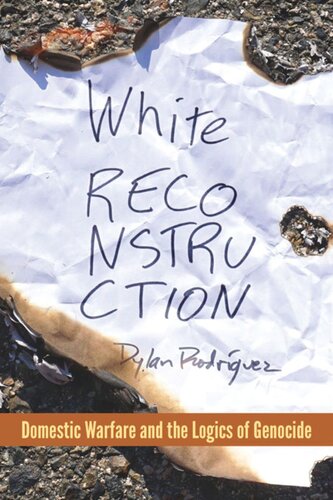

Most ebook files are in PDF format, so you can easily read them using various software such as Foxit Reader or directly on the Google Chrome browser.
Some ebook files are released by publishers in other formats such as .awz, .mobi, .epub, .fb2, etc. You may need to install specific software to read these formats on mobile/PC, such as Calibre.
Please read the tutorial at this link: https://ebookbell.com/faq
We offer FREE conversion to the popular formats you request; however, this may take some time. Therefore, right after payment, please email us, and we will try to provide the service as quickly as possible.
For some exceptional file formats or broken links (if any), please refrain from opening any disputes. Instead, email us first, and we will try to assist within a maximum of 6 hours.
EbookBell Team

4.4
82 reviewsWe are in the fray of another signature moment in the long history of the United States as a project of anti-Black and racial–colonial violence. Long before (and well after) November 2016, white nationalism, white terrorism, and white fascist statecraft proliferated state and extra-state terror as a common order. Here, Dylan Rodríguez counter-narrates the long “post–civil rights” half-century as a period of White Reconstruction, in which the struggle to reassemble the ascendancy of White Being toxifies the formal disassembly of U.S. (Jim/Jane Crow) apartheid and permeates the political and institutional logics of diversity, inclusion, formal equality, and “multiculturalist white supremacy.”
Thinking across a variety of archival, testimonial, visual, and activist texts—from Freedmen’s Bureau documents and the “Join LAPD” hiring campaign to Barry Goldwater’s hidden tattoo and the Pelican Bay prison strike—White Reconstruction implicates the cultural politics and statecraft of white liberalism and reaction alike, illustrating how anti-Black and racial–colonial domestic war not only survive periods of reform but are the conditions of dominance on which such reforms rely, and through which they often articulate.
Throughout White Reconstruction, Rodríguez considers how the creative, imaginative, speculative collective labor of abolitionist praxis responds to legitimated and normalized state violence and terror, showing how the complex and constructive work of abolition can displace and potentially destroy the ascendancy of White Being and Civilization in order to create possibilities for insurgent thriving.
“Written by one of the co-founders of critical ethnic studies movement, White Reconstruction builds a framework for the study of anti-Blackness and racial-colonial violence in the contemporary period.”